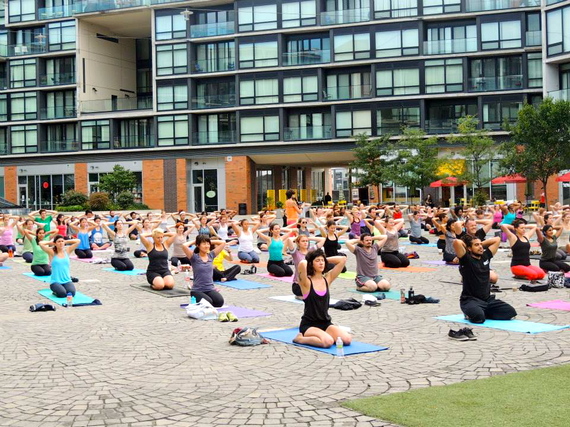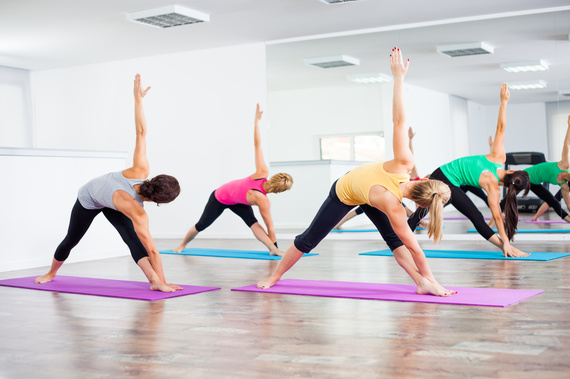Vinyasa Yoga is one of the country's most popular forms of yoga. And what's not to love? It's sweaty, powerful, connected and can allow for a yogi to have a very deep and even spiritual experience. But as amazing as this practice is, there are flaws that are often brushed under the yoga mat. Unfortunately these flaws can lead to misalignment and injury.
First, let me just say that I adore Vinyasa yoga and have been practicing and teaching it for over 12 years. In that time we have gotten to know each other very well and like any relationship, once the courtship is over the true colors come out.
The word Vinyasa is often translated to place in a special way but really the simple Sanskrit translation is movement or position of limbs. In the Vinyasa yoga practice the breath is intricately linked with movements and these movements are linked together to give students a balanced experience physically, mentally and spiritually.
Now if only that actually happened.
Too often the Vinyasa practice is a playground for a teacher's creative expression without much focus on the alignment and linking of the poses. The practice becomes more about giving a cool and challenging class than making sure students are, first and foremost, safe in their bodies.
I've been in my fair share of classes (and have also taught a few myself) where posture after posture was stacked on one side of the body and in the end my muscles were so fatigued it's a wonder my leg didn't snap like a tooth pick. While challenging the muscles and the mind of a student is great, once the muscles reach their brink and become unsupportive the joints start to take on even more weight and this can be compromising.
Then there is this idea that everyone that comes into a Vinyasa yoga class already knows the cues and the poses. This means you will often hear requests such as, "upward facing dog, chaturanga dandasana" or "if it is in your practice come to a headstand or a shoulderstand." The problem with this is that the majority of students who attend Vinyasa classes often just pop into an all levels class and never take a beginners series or a workshop breaking down the poses. So this means that if no one has ever taken the time to actually explain alignment and common misalignments of these rather challenging postures the students are just winging it. This becomes a breeding ground for injury.
So then why practice Vinyasa yoga? There are plenty of other styles out there, styles that spend a lot of time on alignment and breaking down the postures. But here's the thing, the flow and ritual that the Vinyasa yoga practice offers is so very special. When we step into a practice where we are being cued to breath in unison with everyone else in the room we can actually deepen our connection to those around us without ever saying a word. Also, the invitation to drop in to the rhythm the class often gives the mind an order to take a back seat, which is something most of us desperately need. But when a teacher stops intermittently to break down postures this flow is often lost and the logical and analytical side of the brain is turned on, taking you out of that beautiful rhythm.
So what to do with this tricky relationship with Vinyasa yoga? First, whether you are thinking of starting or have been practicing for years, try taking a workshop where the teacher actually breaks down the postures and even talks about the anatomy of the body. You can also balance your Vinyasa practice with a style like Iyengar or Anusara where alignment is the main focus of the practice.
But this is not to say that all Vinyasa classes are void of any useful alignment cues. There are plenty of teachers who try to bring a great deal of physical awareness into the practice while honoring the fluid elements of Vinyasa as well. Seek them out. You will know you are in good hands when they actually tell you how to get into a headstand or give you some strong cues in a chaturanga dandasana.
And if you want a free tutorial from yours truly, check out my video series where I break down a handful of Vinyasa yoga's most popular postures. Just CLICK HERE to watch.

